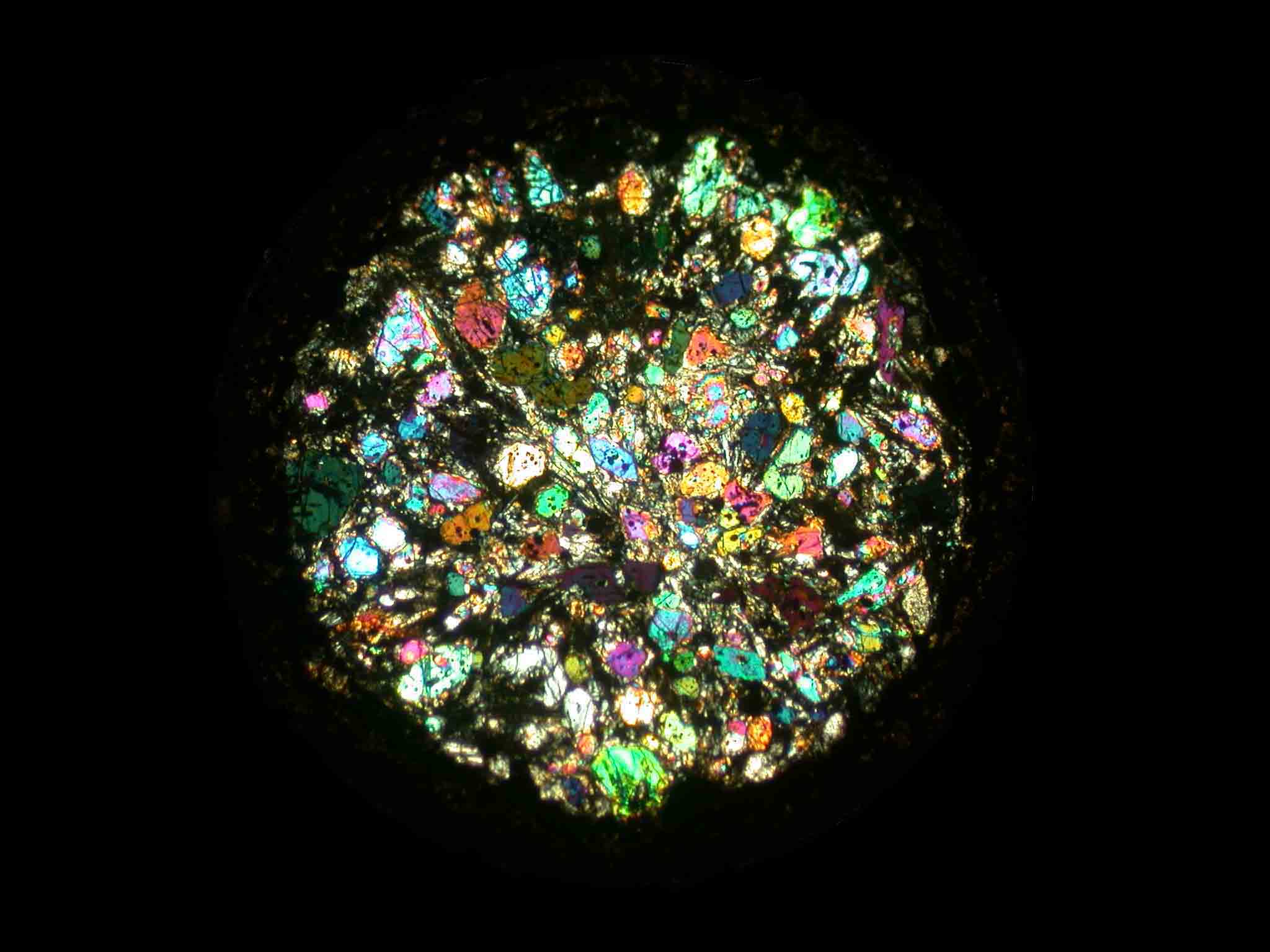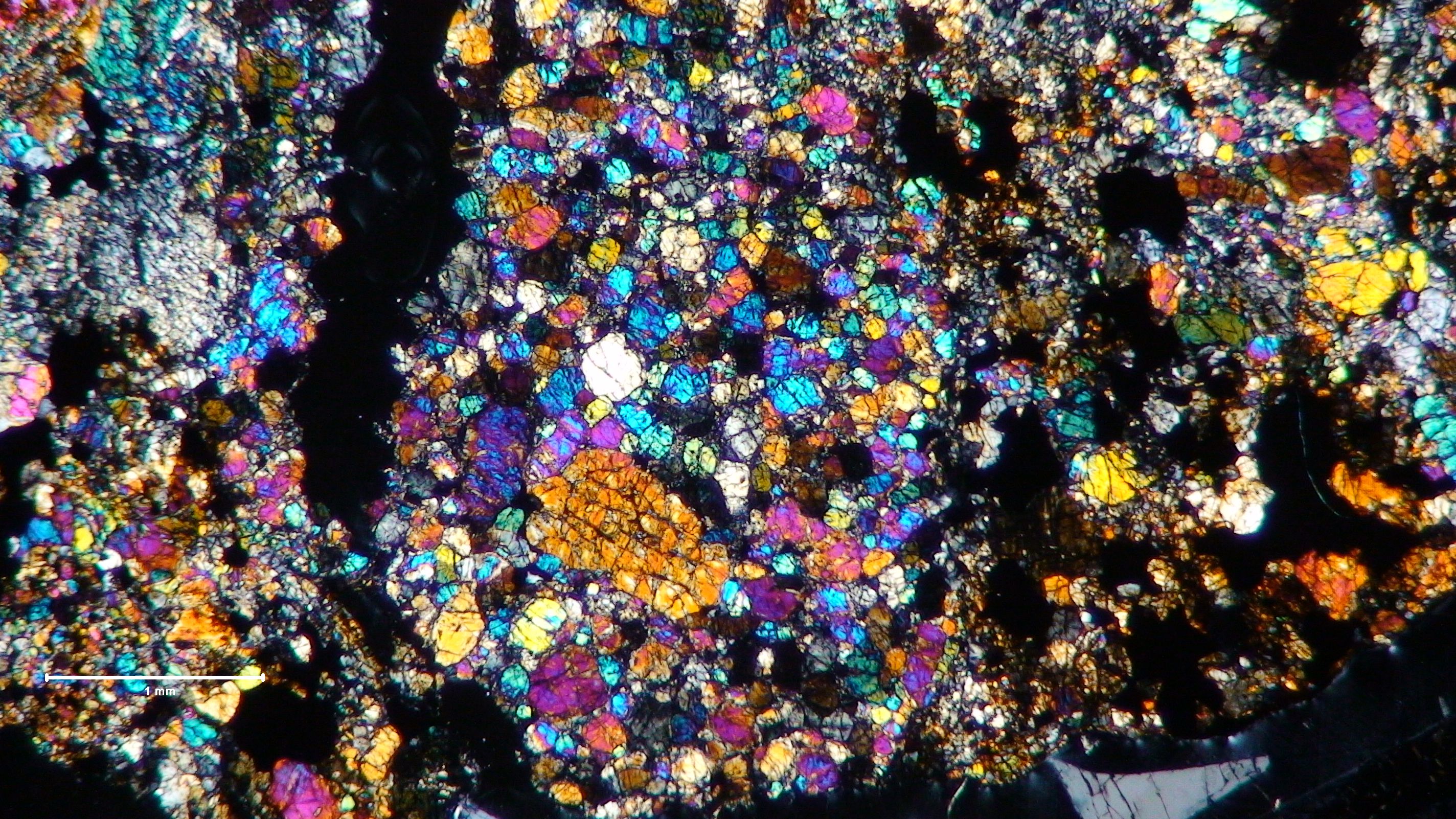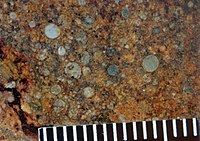Chondrule
Chondrules (Greek χόνδρος, Chondros, grain ), also called Chondrulen are millimeter-sized silicate spheres that are embedded in a fine-grained groundmass. They occur in undifferentiated meteorites, which are also called chondrites. These may contain up to 80% chondrules.
1802 by Jacques Louis de Bournon ( 1751-1825 ) were chondrules described as " curios globules ". The name " chondrule " was introduced in 1869 by Gustav Rose at the Humboldt University Mineralogical Museum in Berlin.
Chondritic meteorites represent the oldest material in the solar system. It is assumed that the other objects of the solar system were formed ultimately from chondritischem material. Because of the frequency of chondrules in this material so it is important to understand their formation, if one wants to understand the origin of the planetary system. It is known today that chondrules were formed from precursor material very quickly - was heated to temperatures up to 1900 ° C and it melted - within minutes or even shorter. The molten balls cooled thereafter within hours again.
Because of the required relative - but not any - short heating and cooling some postulated formation processes can be excluded:
- In the solar nebula: Hot areas in the interior
- FU Orionis phase of the early solar
- Electrical discharges ( lightning fog )
- Magnetic flares
- Strikes on the surface of
- Ablation of surface weft forming projectiles while traversing the atmosphere
Therefore, it is currently assumed that the energy source for the formation of chondrules Akkretionsschocks during the formation of the proto - gas planets were.










